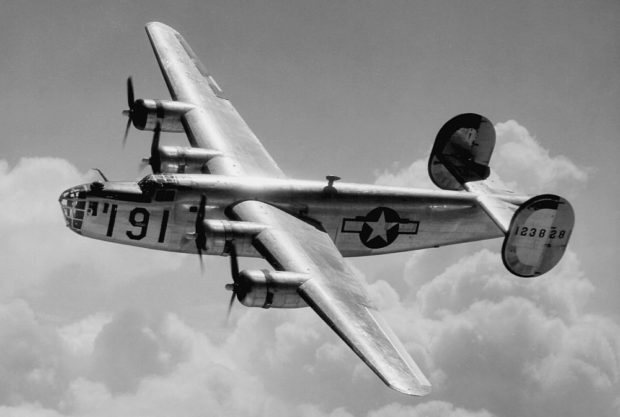B-24, also called Liberator, long-range heavy bomber used during World War II by the U.S. and British air forces. It was designed by the Consolidated Aircraft Company (later Consolidated-Vultee) in response to a January 1939 U.S. Army Air Force (USAAF) requirement for a four-engined heavy bomber.
The B-24 was powered by four air-cooled radial engines and had a spacious boxlike fuselage slung beneath a high wing, a tricycle landing gear, and a twin tail assembly. The first prototype flew in December 1939, and, by the spring of 1941, B-24s were being delivered to the British Royal Air Force on a cash-and-carry basis.
Early models of the B-24 lacked self-sealing fuel tanks and the heavy defensive armament deemed essential by the USAAF for a strategic daylight bomber; therefore, they were used primarily to transport high-priority cargo and VIPs (British Prime Minister Winston Churchill used one as his personal transport) and for anti-submarine patrols.
Anti-submarine B-24s, some fitted with radar, played a major role in the Battle of the Atlantic and were instrumental in closing the mid-Atlantic “gap” where German U-boats had previously operated with impunity.
Alongside the B-29 Superfortress and the B-17 Flying Fortress, the Liberator gained a distinguished war record during its service in the European, Pacific, African, and Middle Eastern theaters. The B-24’s longer range and higher bomb load capacity helped bring the Axis forces down to their knees.
However, despite being the most produced American wartime aircraft, the Liberator was not as popular as its contemporaries. The media and many airmen preferred the B-17 Flying Fortress, which was supposedly inferior to the B-24.
Source: YouTube

